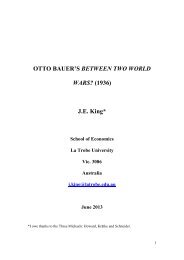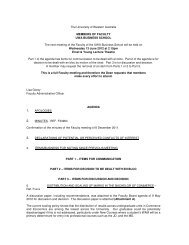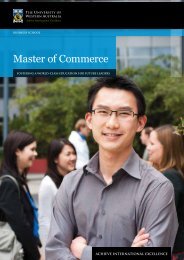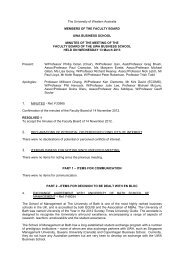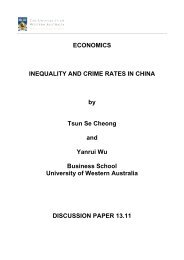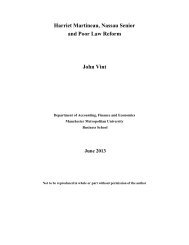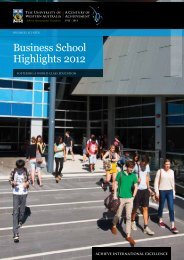A Dynamic Model for determining Inward Foreign ... - Business School
A Dynamic Model for determining Inward Foreign ... - Business School
A Dynamic Model for determining Inward Foreign ... - Business School
Create successful ePaper yourself
Turn your PDF publications into a flip-book with our unique Google optimized e-Paper software.
inflation, interest rate, GDP and so on). More precisely, financial risk has negative effect on<br />
inward FDI and political risk significantly influences inward FDI with negative sign, but<br />
the economic risk has a significant positive sign in <strong>determining</strong> inward FDI. This seems to<br />
indicate that <strong>for</strong>eign investors would continue investing in Jordan although economic risk<br />
perceptions have worsened in the short-run. Nevertheless, this empirical observation does<br />
not encourage economic risk, but to highlight the short-run responses of inward FDI to<br />
Jordan’s economic risk. In the long run, the economic risk has negative impacts on the<br />
inward FDI in Jordan. It can be explained by Uctum and Uctum (2011, 475) study that<br />
economic risk reduces the inflow of FDI.<br />
Services, industry and general stock market price sectors affect inward FDI negatively, but<br />
the banking stock market positively influences <strong>Inward</strong> FDI and statistically insignificant. In<br />
the short-run high interest rate attracts more inward FDI. This shows that <strong>for</strong>eign investors<br />
would remain investing in Jordan. It can be explained by Farrell et al (200, 17); Pan (2003,<br />
832); Tolentino (2010, 114) and Uctum and Uctum (2011, 466) who report that interest rate<br />
increase the inflow of FDI to host country. However, high interest rate would discourage<br />
the inflow of FDI in the long-run as it considers high borrowing cost. This conclusion<br />
supports Cuyvers et al (2011, 255) study the effects of interest rate on inward FDI in a<br />
developing economy such as Cambodia. Cuyvers et al point out that a negative nexus<br />
between interest rate and the level of inward FDI in a host country. Also, Wei and Liu<br />
findings (2001); they indicate economic linkages between FDI and cost of borrowing. This<br />
specifies that a lower cost of borrowing in the home country than in host country gives the<br />
home country firms a cost advantage over their rivals in the host economy.<br />
The significance of the error correction terms of these ECMs further reveals the following<br />
interpretations. Firstly, it confirms the presence of a long –run equilibrium relationship<br />
among the inward FDI and its determinants. Secondly, Jordan country risks,<br />
macroeconomic factors and stock market price do jointly Granger causes the level of<br />
inward FDI in Jordan. Finally, the estimated coefficient of error correction term indicate the<br />
speed of adjustment among the variables towards long run equilibrium take 2 years to 2.5<br />
years (58 months) approximately to return to equilibrium.<br />
26




